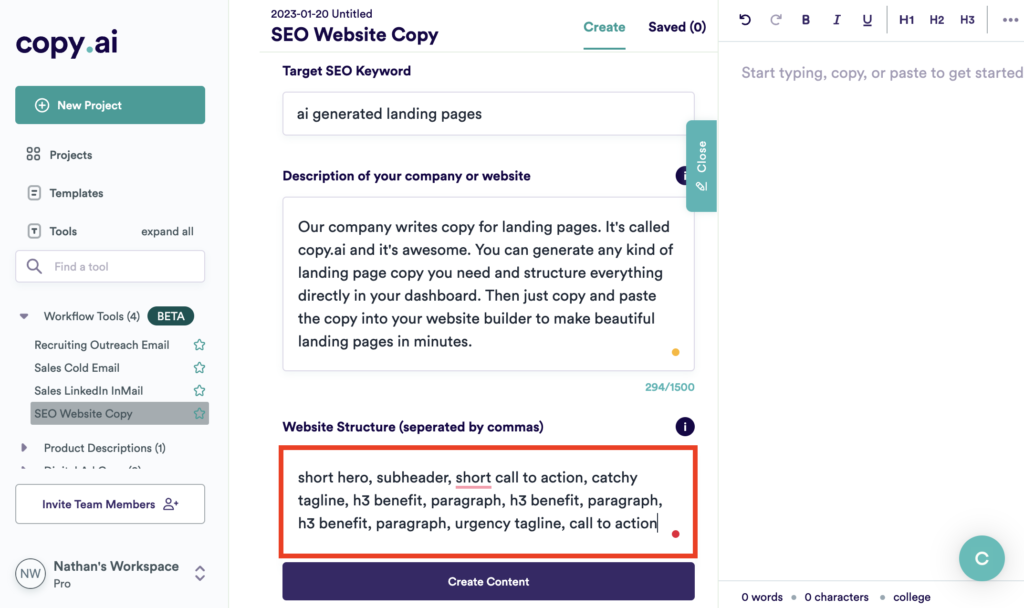Blog

Ways UX Designers Can Use AI to Their Advantage
Ways UX Designers Can Use AI marks the dawn of a new UX design era, powered by Artificial Intelligence. This profound shift leverages AI’s automation and deep learning, transforming not just user-product interactions, but also streamlining the design process. Welcome to the future of UX, where AI is no longer an option but an essential design partner.
Harnessing AI’s power introduces a wealth of opportunities for exploration. UX designers can now forge smarter interfaces, craft more intuitive user experiences, and even redefine traditional design workflows. Data-driven insights and bespoke experiences, courtesy of AI, offer a distinct advantage for those willing to harness its potential.
Beyond Personalization: The Art of AI-Driven Custom Experiences
As we venture further into the AI-enhanced design realm, it becomes evident that AI-driven customization goes beyond traditional personalization. With AI, personalization isn’t just about inserting the user’s name in an email or greeting. AI allows us to analyze vast amounts of user behavior data, enabling the crafting of unique and intuitive experiences tailored specifically to individual user preferences.
Such a level of customization is a significant leap from traditional personalization tactics. With AI, content, layout, and functionality – every aspect can be tailored to individual users. As a result, user interactions with the product become seamless, enhancing user satisfaction and driving up conversion rates. The art of AI-driven custom experiences represents a future where every interaction feels personal and intuitive.
Revving up the Efficiency Engine with AI in UX Design
Artificial Intelligence’s ability to enhance efficiency in UX design cannot be understated. By automating mundane, repetitive tasks, AI gives designers more time to focus on the creative aspects of their work. Predictive algorithms and intelligent recommendations based on user data aid in crafting more effective designs. Integrating AI into UX design is like installing a high-powered engine in your design process, one that propels you towards your goals with precision and speed.
Notion’s Beta AI, for instance, serves as a testament to the efficiency that AI brings to the design table. This tool streamlines the design process, automates workflows, and provides insightful, data-driven recommendations. By employing AI, we can design more efficiently, effectively, and innovatively, enhancing productivity and delivering superior designs.
__IMAGE_xo5geqagln__
Building Personas with AI: A New Frontier in User Understanding
User understanding forms the backbone of any successful UX design. Crafting user personas helps designers empathize with users, guiding them to design products that genuinely cater to their needs. But AI takes persona building to a whole new level, enabling a more precise and nuanced understanding of user needs and behaviors.
With AI, creating user personas becomes a data-driven process. Tools like SmarTone leverage AI capabilities and use sentiment analysis to capture subtle nuances in user behavior and preferences. By exploiting AI’s ability to analyze large datasets quickly and accurately, UX designers can construct more informed, insightful personas – a new frontier in understanding users.
Bridging UX Design and Product Writing through the Lens of AI
Artificial Intelligence also plays a pivotal role in bridging the gap between UX design and product writing. Traditionally, these two domains have existed separately in the design process. However, AI’s capability to generate context-based copy has changed the game, enabling more seamless integration between UX design and product writing.
AI-powered tools like Writer and Copy AI can generate contextually relevant content for prototypes and wireframes, guaranteeing a coherent and engaging user experience. AI, in this sense, acts as a bridge between design and writing, ensuring these two critical aspects of UX design work in unison, leading to first-rate user experiences.

Accelerating Design Workflows: AI as Your Personal Assistant
AI in UX design also translates to accelerated design workflows. AI can assist designers as personal assistants, automating routine tasks and providing data-driven insights. With AI, designers can rapidly iterate, test usability, and refine their designs based on real-time user feedback.
For example, consider Adobe’s Sensei, an AI and machine learning tool that automates complex processes and offers design suggestions. Sensei is like a personal design assistant, helping designers accelerate their workflows, improve efficiency, and focus more on innovation and creativity. The results? Quicker turnarounds and higher-quality designs.

AI-Powered UI Elements and Branding: Redefining User Interfaces
Integrating AI in UX design also extends to UI elements and branding. By automating the design of logos, icons, typefaces, and color palettes, AI allows even small teams to deliver world-class UI and branding, leading to memorable user experiences.
For instance, Airbnb’s Design Language System leverages AI to generate branding elements that resonate with the brand’s identity. Such tools enable designers to maintain brand consistency across different platforms and user touchpoints. The result is a unified, engaging user interface that strengthens brand recognition and enhances the overall user experience.
The AI Analyst: Unearthing User Insights through Data
Artificial Intelligence serves as an expert analyst in the realm of UX design. It unearths rich user insights from massive amounts of data, helping designers understand user interaction patterns, preferences, and pain points. These insights are valuable design inputs that inform UX design decisions and strategies.
Research AI is a prime example of this tool, leveraging AI’s analytical prowess to transform raw data into actionable user insights. Undoubtedly, AI has revolutionized how we extract and interpret user data, serving as a critical tool in crafting user-centric designs.
Innovate or Perish: Staying Ahead with AI in UX Design
Innovation is crucial to survival in the dynamic field of UX design – and AI is the perfect companion. It allows designers to experiment with advanced technologies like voice or gesture-based controls, augmented reality (AR), and virtual reality (VR). These technologies push the boundaries of conventional design, offering users unique and engaging experiences.
By harnessing AI in UX design, designers can stay ahead of the curve and anticipate future trends. This proactive approach ensures that the products they design are not only relevant in the present but also geared towards future user expectations, staying ahead of technological trends.
A/B Testing on Steroids: Prototyping in the Age of AI
Prototyping and A/B testing are integral parts of the UX design process. AI supercharges these aspects, providing deep insights into user preferences and behaviors, leading to more informed design decisions. With AI, designers can quickly test multiple design variations, gather user feedback, and refine their designs.
VisualEyes, for instance, uses AI to facilitate comprehensive user testing. It provides precise data on what works best for the user, making A/B testing more insightful and compelling. AI enhances the prototyping process, helping designers create more user-centric designs.

AI in UX Design: Challenges and Ways to Overcome Them
While AI holds enormous potential for UX design, it also brings its share of challenges. From technical complexities to privacy concerns, these challenges require thoughtful consideration. However, they can be overcome with the right strategies, tools, and understanding.
A Deeper Dive into Privacy and Security Concerns
With great power comes great responsibility. AI’s ability to analyze and interpret user data brings privacy and security concerns to the forefront. As UX designers, we must prioritize user trust, ensuring all data is handled responsibly and transparently.
Strategies for handling these concerns include:
- Anonymizing user data.
- Being transparent about data usage.
- Ensuring compliance with data privacy laws like GDPR.
Tools like Privacy Bot can also assist designers in meeting these privacy standards, ensuring user trust is maintained.
Decoding the Technical Complexity of AI in UX Design
The technical complexity of AI can be daunting for many designers. However, several tools and platforms help bridge this gap, making AI accessible even to those without a deep understanding of the technology.
Platforms like Google’s Teachable Machine make AI more approachable, allowing designers to train AI models without coding. With the right tools, the technical complexity of AI becomes a manageable challenge, opening the door to its many benefits.
„Ways UX Designers Can Use AI”: A Debate on AI’s Role in Design
In the wake of AI’s growing influence in UX design, one question often arises: will AI replace designers? The answer, in our view at least, is no. There’s no doubt that AI is a powerful tool, but it doesn’t replace the need for human creativity, intuition, and empathy.
AI is there to augment the designer’s work, not to replace it. It offers efficiencies, insights, and capabilities that enhance the design process. And yet the core of design – understanding human needs and creating solutions that resonate with them – remains distinctly human.
In conclusion
Ways UX Designers Can Use AI explores an exciting path of innovation, efficiency and highly personalised user experiences. Adopting this technology can unlock a universe of possibilities for UX designers. However, its powerful capabilities warrant responsible and informed use, with an understanding of the inherent challenges. After all, the main goal is to create design solutions that enhance the human experience. In this mission, artificial intelligence appears as a powerful partner.
Get latest insights, ideas and inspiration
Take your app development and management further with Codigee
Let's make something together.
At Codigee, we value transparency, efficiency, and simplicity. No overengineering. No wasted time.
Just straight-up execution.
We are obsessed.
Every billion-dollar company started with one decision, one step, one iteration. The key? Taking action and executing fast.

